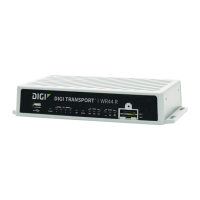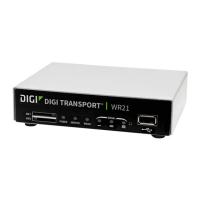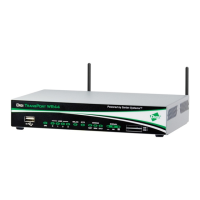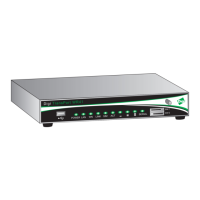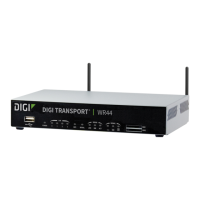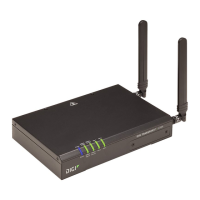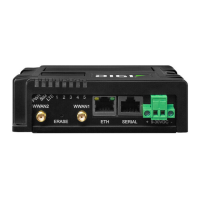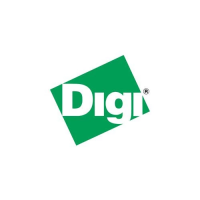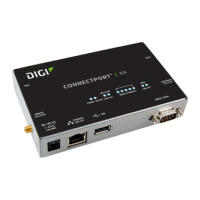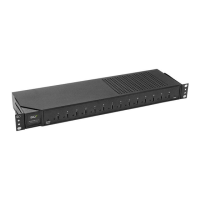Configuring legacy protocols Configure X.25 parameters
Digi TransPort® Routers User Guide
648
X.25 packet switching
X.25 is a data communications protocol employed throughout the world for wide area networking
across Packet Switched Data Networks (PSDNs). The X.25 standard defines the way in which terminal
equipment establishes, maintains and clears Switched Virtual Circuits (SVCs), across X.25 networks to
other devices operating in packet mode on these networks.
The protocols involved in X.25 operate at the lower three layers of the ISO model:
n At the lowest level the Physical layer defines the electrical and physical interfaces between the
DTE and DCE.
n Layer 2 is the Data Link Layer that defines the unit of data transfer as a “frame” and includes
the error control and flow control mechanisms.
n Layer 3 is the Network layer. This defines the data and control packet structure and the
procedures for accessing services that are available on PSDNs.
Another standard, X.31, defines the procedures for accessing X.25 networks via the ISDN B and D-
channels.
Digi ISDN products include support for allowing connected terminals to access X.25 over ISDN B
channels, the ISDN D-channel or over TCP. They can also be configured so if there is a network failure,
the router automatically switches to using an alternative service. The Packet
Assembler/Disassembler (PAD) interface conforms to the X.3, X.28, and X.29 standards.
Up to 6 PAD instances, from an available pool of 8, can be created and dynamically assigned to the
asynchronous serial ports or the REM pseudo-port.
Each application that uses the router to access an X.25 network has its own particular configuration
requirements. For example, you may need to program your Network User Address (NUA) and specify
which Logical Channel Numbers (LCNs) to use on your X.25 service. This information is available from
your X.25 service provider. You also need to decide whether your application uses B- or D-channel X.25.
Once you have this information, use the PAD configuration pages to set up the appropriate
parameters.
B-channel X.25
The router can transfer data to/from X.25 networks over either of the ISDN B-channels.
Once the router has been configured appropriately, the ISDN call to the X.25 network can be made
using an ATD command or by executing a pre-defined macro. The format of the ATD command allows
you to combine the ISDN call and the subsequent X.25 call in a single command. Alternatively, the X.25
call may be made separately from the PAD> prompt once the ISDN connection to the X.25 network
has been established.
D-channel X.25
The router can transfer data to/from X.25 networks over the ISDN D-channel if your ISDN service
provider supports this facility. The speed at which data can be transferred varies depending on the
service provider, but is generally 9600 bits per second or lower.
X.28 commands
Once an X.25 session layer has been established the router switches to PAD mode. In this mode,
operation of the PAD is controlled using the standard X.28 PAD commands listed in the following table:
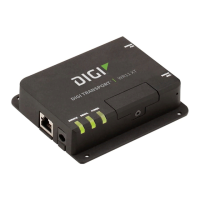
